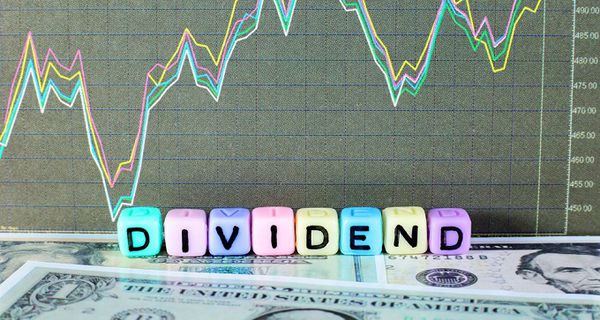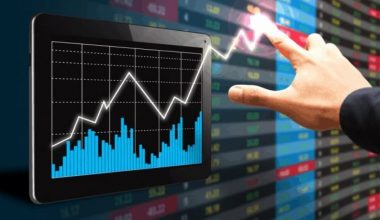Are you an investor who wants an investment with a regular income? Search no further, dividend stocks are here for your investing pleasure. Here you’ll learn how to invest in dividend stocks.
What are Dividend Stocks?
Dividend stocks are a type of stock in which its earnings are gotten on a regular basis.
In other words, every divided stock you own gives you a part of the company’s earnings.
It is likened to a source of passive income. Well, its yield is relatively low but it is understandable because it has low investment risk.
Since they are less unstable, they help an investor diversify his portfolio and reduce risk.
What to Look for When Buying Dividend Stocks
Here are the tools you’ll need to locate fantastic dividend stocks on your own, as promised previously in this post.
If you’re new to dividend investing, it’s a good idea to learn about dividend stocks and why they’re such good investments. Once you understand how dividends operate, a few essential factors can assist you in finding outstanding dividend stocks for your portfolio.
#1. Payout ratio:
The payout ratio of a stock is the amount of money paid in dividends per share divided by earnings per share. In other words, it tells you what percentage of earnings a stock distributes to its shareholders. A sufficiently low payout ratio (say, 60% or less) indicates that the dividend is sustainable.
#2. Increases in the past:
It’s a really excellent sign when a corporation raises its dividend year after year, especially when it can do so amid recessions and other difficult economic times like the COVID-19 epidemic.
#3. Consistent revenue and profits growth:
When looking for the finest dividend stocks to invest in for the long term, look for firms that are stable. Erratic revenue (up one year, down the next) and erratic earnings might be warning indications of problems.
#4. Long-term competitive advantages:
Perhaps the most essential feature. A long-term competitive advantage can take many forms, including proprietary technology, high entry barriers, high customer switching costs, or a strong brand identity, to mention a few.
#5. High yield:
This is at the bottom of the list for a reason. A high yield is obviously better than a low yield, but only if the remaining four requirements are met. A high dividend is only as strong as the company that pays it, therefore compare dividend yields after ensuring that the company is robust and the payout is stable.
Misconceptions of Dividend Stock
#1. High yield is Key
This is one of the biggest mistakes investors make thinking that a high yield investment is a good option.
They argue that since dividend stocks pay a small yield, it is a bad investment choice.
A dividend is a percentage of a company’s earnings that is not re-invested. Some companies who pay high earnings either do not have a more profitable re-investment option or do not have a clear vision.
#2. Dividend Stocks are Boring
If you can minimize your love for high yield, you would find out that dividend stocks are very interesting investments.
It has high dividend growth metrics. meaning there is a high potential for increased earnings in the future.
How to Invest in Dividend Stocks
We will categorize how to invest in dividend stocks into two;
Investing in dividend stocks through ETFs
ETF stands for exchange-traded funds.
Dividend ETFs are an easy and straightforward investing source that offers a regular dividend.
Apparently, it includes lots of dividend stocks, which provides diversifications that are equated to safety.
Diversification of a portfolio is a safety measure in investing. Even if a few stocks have a low dividend yield, it will not affect the overall dividend so much.
Before investing in stocks, consider if they are safe payout investments.
Read Also: What are the Types of Brokers and Brokering Services?
How to buy/invest in a dividend stock ETF
#1. Find a diversified dividend ETF
You can find a dividend ETF by searching a stockbrokers’ website.
#2. Analyze the ETF
Make sure you invest the ETF in stocks, otherwise called equity, not in bonds. In addition, you will check the following;
- The dividend yield: This is expressed as a percentage of how much a company pays out in dividends relative to its share price.
- Returns: Check the five years returns. See if it is progressing or retrogressing.
- ETF expenses: This includes the ETFs annual fees, ROI, we advise you to invest in ones with an expense ratio of less than 0.5%.
- Stock size: Investments can be either in larger capitalization, medium, or low capitalization companies. But, the large-capitalization companies have minimal risk in investments. Small-capitalization companies have the highest risks.
#3. Invest in the ETF
Buy an ETF from an online broker. Buying them regularly gives you an advantage called dollar-cost averaging.
Dollar-cost averaging is a strategy of diversifying your stock purchases, buying at regular intervals, and in roughly equal amounts. When it is done properly, it has a significant benefit for your portfolio.
This is because dollar-cost averaging reduces your purchase price over time and helps ensure that you are not investing all your money at high prices.
Investing in Individual Dividend Stocks
This takes time and efforts especially when you intend on building a portfolio in an individual dividend stock. But, you have the tendency to get a higher dividend than the ETF.
How to buy
#1. Find a Dividend-paying stock
Check that out on financial websites and in online brokers websites.
#2. Evaluate the stock
Compare the dividend yield of that company to those of similar companies. If theirs is much higher, it can be no good, ensure the safety of your investment by carrying out additional research on the company.
Find out the percentage of the company’s income that is used as a dividend. If a higher percentage is going to dividends, the company could be running into debt in no distant time.
3. Decide on how much stock to buy
Individual stocks require diversification, so, you will determine how much of each stock to buy.
The ideology behind this is to buy less of higher-risk stocks and more of lesser risk stocks.
The safety of your stocks should be your priority. Stocks with yields over 4% should be carefully checked, whereas those with a dividend yield over 10% is highly risky and should be traded cautiously.
Before investing, check the dividend yield. Know the risk tolerable by you and don’t forget to diversify your portfolio.
Tips for Investing in Dividend Stocks
According to Investopedia, here are the tips for how to invest in dividend stocks;
1. Have a low return/yield expectation
2. Don’t buy dividend stocks from companies with a high percentage of debt. Check the debt-to-equity ratio to determine if the company is financing using more equity or debt.
3. Check the heath of the Industry: For example, buying a dividend stock in the oi and gas industry at the moment is not a wise investment because of the fall in oil price and subsequently share price.
If you are sure to invest in a dividend stock, look for companies that their earnings are increasing. Look for those with strong cash flow, a low debt-to-equity ratio, and industrial strength.
When you find a stock or stocks that meet these criteria, consider setting up a dividend investment and reinvestment plan.
Dividend Aristocrats
Dividend investors can look for high-yield dividend stocks such as those featured on this page, but there is another aspect to consider in dividend investing: consistency, which is especially crucial for fixed-income investors. And it is here that the Dividend Aristocrats truly shine.
The S&P 500 Dividend Aristocrats is a market index that contains chosen S&P 500 firms. Companies must meet the following requirements in order to be considered:
- Dividends have been increased every year for the past 25 years.
- Have a market cap of at least $3 billion after adjusting for float.
- Have a minimum daily trading value of $5 million.
- The methodology of the index also requires a minimum of 40 companies to be included, and no sector may account for more than 30% of the index’s weight.
So, what does this imply for investors? Dividend Aristocrats are major corporations with consistent dividend payments and significant liquidity, and the index as a whole may provide greater diversification than high-yield dividend indexes (which are typically heavily weighted toward the financials and utilities sectors). Investors can choose specific Dividend Aristocrats to invest in, or they can buy in ETFs that meet similar reliability-based criteria. The S&P 500 High-Yield Dividend Aristocrats index has slightly different criteria.
25 High-yielding Dividend Stocks
The following is a list of 25 high-dividend stocks with headquarters in the United States, sorted by dividend yield. The dividend listed below is paid on a monthly basis, not annually. In addition to the dividend yield and amount, we consider the dividend growth rate over the last five years and the dividend payout % while compiling this list.
|
Symbol |
Company Name |
Dividend Yield |
|---|---|---|
|
UVV |
Universal Corp. |
6.70% |
|
OKE |
ONEOK Inc. |
6.25% |
|
PM |
Philip Morris International Inc. |
5.82% |
|
PSX |
Phillips 66 |
5.32% |
|
PNW |
Pinnacle West Capital Corp. |
5.23% |
|
LYB |
LyondellBasell Industries NV |
5.19% |
|
CVX |
Chevron Corp. |
4.75% |
|
SAFT |
Safety Insurance Group Inc. |
4.66% |
|
NWE |
NorthWestern Corp. |
4.48% |
|
ALE |
ALLETE Inc. |
4.30% |
|
OMC |
Omnicom Group Inc. |
4.16% |
|
GILD |
Gilead Sciences Inc. |
4.12% |
|
AEP |
American Electric Power Co Inc. |
3.85% |
|
PFG |
Principal Financial Group Inc. |
3.73% |
|
BKH |
Black Hills Corp. |
3.71% |
|
LAMR |
Lamar Advertising Co. |
3.66% |
|
REG |
Regency Centers Corp. |
3.61% |
|
BOH |
Bank of Hawaii Corp. |
3.51% |
|
KMB |
Kimberly-Clark Corp. |
3.50% |
|
MMM |
3M Co. |
3.48% |
|
MRK |
Merck & Co. Inc. |
3.47% |
|
LMT |
Lockheed Martin Corp. |
3.36% |
|
SJM |
J.M. Smucker Co. |
3.13% |
|
WEC |
WEC Energy Group Inc. |
3.12% |
|
CHCO |
City Holding Co. |
3.06% |
Do you have any questions, talk to us in the comment box.
Dividend Stocks FAQ’s(Opens in a new browser tab)
Is dividend better than stocks?
Dividends are money in your pocket while the market’s equities rise and fall. Companies that have a track of delivering regular dividend payments year after year tend to be run more efficiently, as the company is conscious that it must provide cash to its investors four times per year.
Are dividend stocks a good idea?
Dividend-paying equities allow investors to be paid even when the market is volatile and capital gains are difficult to obtain. They are an excellent inflation hedge, especially when they expand over time. They are taxed differently from other types of income, such as interest on fixed-income investments.
Can you lose money on dividend stocks?
Investing in dividend stocks entails certain risks, just like any other sort of stock investment. You can lose money by investing in dividend stocks in any of the following ways: Share prices can fall. Worst-case scenario: the company fails before you can sell your shares.
What is dividend income?
Dividend income is indicated on your tax return – the dividend income you declared on your tax return. Difference – the difference between what financial institutions report to us and what you declare in your tax return (two figures are shown – dividend income and credit amount)…. This is also known as a franking credit.
- ETF Portfolio: 7+ Best Dividend Portfolios in 2022
- Dividend Mutual Funds: Definition, How they Work, Pros & Cons
- High Dividend Mutual Funds: Best 2022 Options (Updated)
- Dividend Yield: Meaning, Detailed Examples, Formula & Free Investor
- Growth Investing Strategy: Step by Step Guide For Beginners (+Free Tips)






